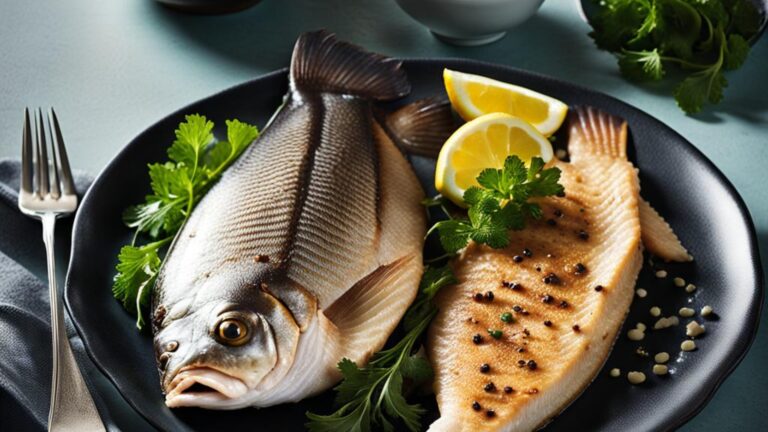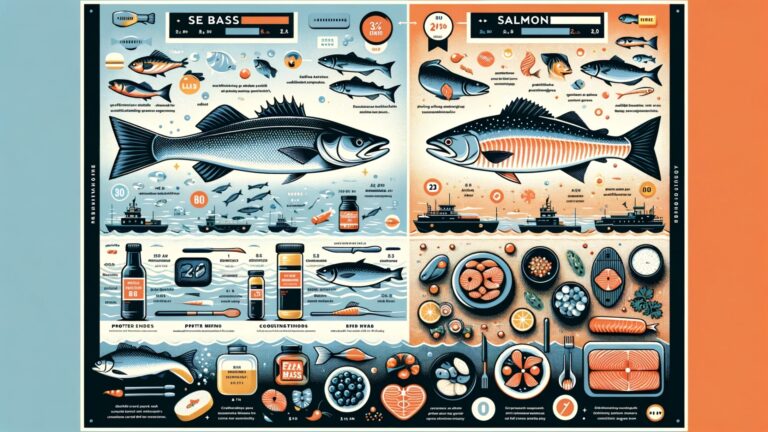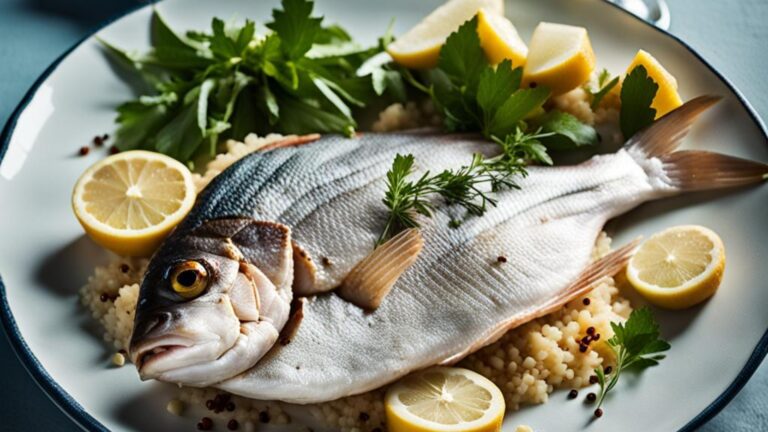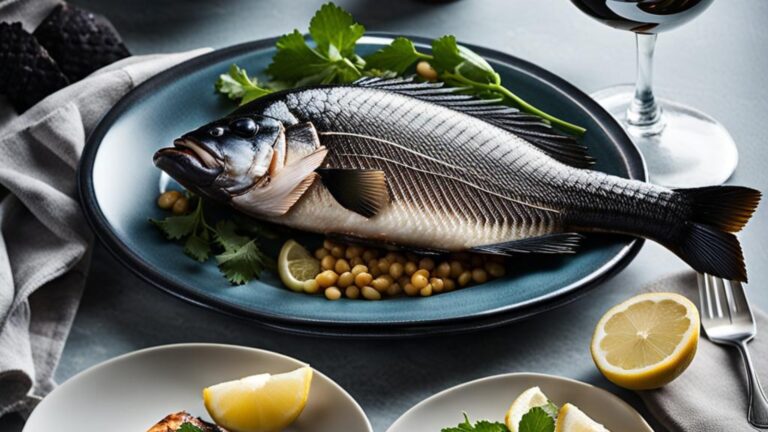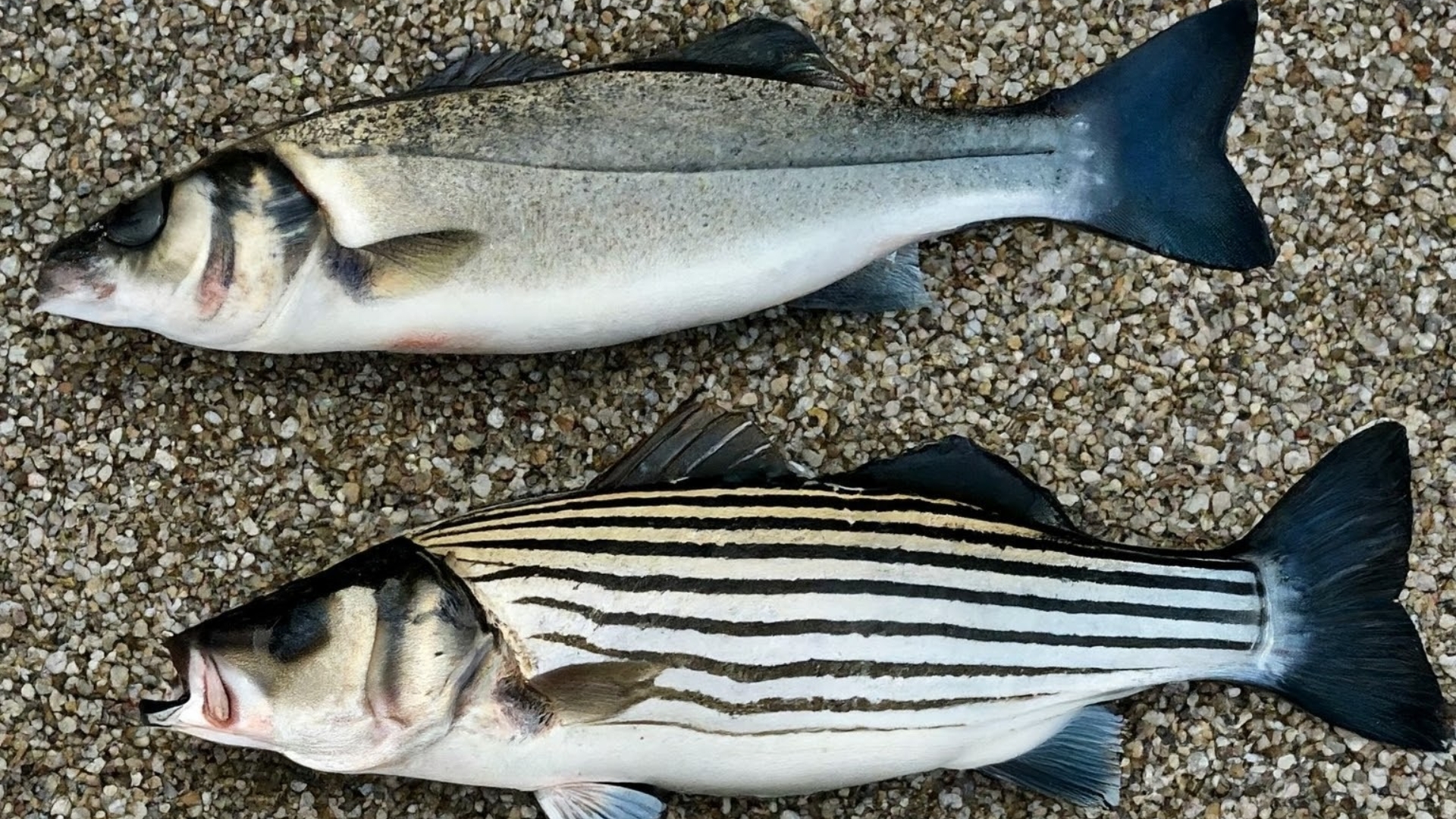
Sea bass has tender white flesh with a delicate flavor. Striped bass features distinct flavor, firm texture, and prominent dark stripes along a sleek body.
Besides these differences, Sea and Striped Bass have many more differences as food or fish living in the Ocean.
I will explain everything about these two fishes, including differences, similarities, nutritional facts, taste as human food, and much more.
Finally, I will decide which one will be good for you as seafood.
Welcome to my other discussion on fish. After the popular writing about Sea Bream va Sea Bass discussion, this is my second discussion on fish. So, without any delay, let’s jump into the main discussion.
An Overview
Before I go into the detailed discussion, I think having a basic idea about these two fishes will be good.
I made a time-saving comparison table from my experience and research from different forums and public opinion.
| Characteristic | Sea Bass | Striped Bass |
| Family | Serranidae | Moronidae |
| Native Regions | Eastern Atlantic Ocean, from southern Norway to Senegal | Atlantic coast east of the Appalachian Mountains |
| Size (Weight and Length) | 2-9 Pound and 20-26 inches | 20 – 35 Inches and 5 – 20 pounds |
| Body Shape | large head and mouth, tight scales, elongated body shape | Streamlined, striking longitudinal dark stripes. |
| Coloration (Color) | Diverse color: black, dusky brown, or pale green | Green, olive, black, brown, and blue |
| Diet | Consume everything smaller than it | Small fish, worms, squids, crustaceans, and anchovies |
| As a Food | mildly sweet flavor | Sweet and briny, without a hint of fishiness |
| Grilled sea bass ceviche, miso-glazed sea bass | Pan-seared, striped bass tacos grilled with herbs | |
| Popular Species | European seabass | Whiterock bass |
| Chilean sea bass | Atlantic Striped Bass | |
| Aquarium Friendly | Yes | Can be kept |
| Lifespan | Up to 25 years | Up to 30 years |
Sea Bass vs. Striped Bass: Differences
As I explore the world of food and water, I have some experience with the differences between Sea Bass and Striped Bass.
These fish taste and feel different and have various unique qualities that matter for cooking and their environment. Let’s see these differences in short.
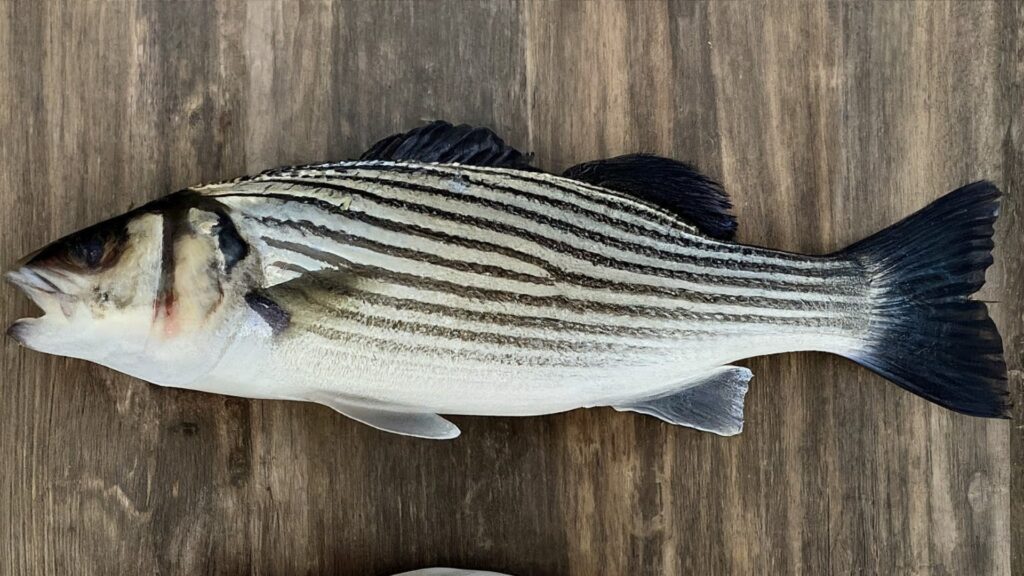
Family and Native Regions
Sea Bass and Striped Bass belong to different families and live in distinct areas. Sea Bass are found in the Eastern Atlantic, from Norway to Senegal.
Meanwhile, Striped Bass inhabits the Atlantic coast, east of the Appalachian Mountains.
Differences In Size
Size is a crucial factor that differentiates these two fish. Sea Bass generally tip the scales at 2 to 9 pounds, stretching 20 to 26 inches long. I have seen some bass that can grow up to 20-30 inches.
On the other side of the spectrum, Striped Bass, flaunting their larger dimensions, boast lengths of 20 to 30 inches and can weigh an impressive 5 to 20 pounds.
Distinctive Body Traits
While both species feature elongated body shapes, their distinguishing characteristics set them apart. Sea Bass exhibit a large head and mouth, complemented by tight scales.
Striped Bass, in contrast, showcase streamlined bodies adorned with striking longitudinal dark stripes that lend them an alluring visual appeal. The stripe from head to tail is a special feature of this fish.
Color Palette
Their colorations add another layer of contrast. I think these differences mainly make them different to many people. Sea Bass exhibit diverse colors, from black to dusky brown and pale green.
Conversely, Striped Bass wear green, olive, black, brown, and blue hues, creating a captivating tapestry on their skin. These colors are its stripe colors. The body is mainly silver in color.
Dietary Preferences
Their food choices affect how they taste in cooking. Sea Bass are like all-around eaters, enjoying anything smaller than them.
On the other hand, Striped Bass go for small fish, worms, squids, and more, which gives their meat a unique flavor. Mainly the food habit is almost the same, I think.
Flavorful Identity
This part is my loved one because I have personal experience here. Sea Bass has a gentle sweetness that pleases taste buds with delicate and subtle flavors.
On the flip side, Striped Bass brings a mix of sweetness and a hint of the sea without being too fishy. These particular flavors make them great for all sorts of cooking styles.
Culinary Delights
For people like me who love cooking, there are many exciting ways to make these fish dishes. Sea Bass is fantastic for grilling, making sea bass ceviche, or adding a tasty miso glaze.
On the other hand, Striped Bass is a star when pan-seared, turned into yummy striped bass tacos, or grilled with fragrant herbs.
Notable Species
Think of it like having special ambassadors for each group. The European Seabass is like the spokesperson for the sea bass family, while the proud representative of the striped bass group is the Atlantic Striped Bass.
Aquarium Considerations
If you’re into having underwater pals, Sea Bass can be good buddies in your aquarium. But keeping Striped Bass in tanks might need more care. They could still be an option if you’re all set with the right setup and know-how.
Lifespan Perspective
The passage of time reveals another contrast. Sea Bass exhibit a lifespan of up to 25 years, while their Striped counterparts can gracefully navigate the waters for up to 30 years, leaving an indelible mark on their aquatic ecosystems.
Sea Bass vs. Striped Bass: As a Food
Imagine Sea Bass and Striped Bass as culinary celebrities, each with unique appeal. Sea Bass is like a delicate sweetheart, offering a mix of sweet and savory that’s perfect for grilling, making ceviche, or getting creative with glazes.
On the other side, Striped Bass is a charming character, giving you a taste of the sea without being too strong. It loves being pan-seared, turning into tasty tacos, or enjoying herb-infused grilling.
Sea Bass comes in various colors, while Striped Bass rocks those classy stripes. Their food preferences shape their flavors, making them a delightful duo for foodies to savor.
Nutritional Differences Between These Two
When it comes to nutrition, Sea Bass and Striped Bass have their unique qualities. A 3-ounce (85g) serving of cooked Sea Bass gives you 124 calories, 4g of fat, 76.5mg sodium, and a nice 20.6g of protein.
It also brings in 45.1mg of magnesium, 39.8 mcg of selenium, and a good dose of vitamins A, B6, and B12. For raw Striped Bass, every 100g offers 97 calories, 2.33g of fat, and a solid 17.7g of protein.
It carries 80mg cholesterol and 69mg sodium, plus essential vitamins and minerals like B12, phosphorus, and selenium.
Nutritional Table
| Nutrient | Sea Bass | Striped Bass |
| Calories | 124 | 97 |
| Protein | 20.6g | 17.7g |
| Total Fat | 4g | 2.33g |
| Saturated Fat | Not specified | Not specified |
| Cholesterol | Not specified | 80mg |
| Sodium | 76.5mg | 69mg |
| Iron | Not specified | 0.84mg |
| Vitamin B12 | 0.3mcg | 3.82μg |
Similarities Between Sea Bass and Striped Bass
Besides these differences, you can’t avoid the similarities between these two fishes. If you avoid them, you will have half the knowledge.
Here are the similarities between these two.
- Both Sea Bass and Striped Bass are popular choices in the culinary world.
- They provide a good source of protein and essential nutrients.
- Both fish have a mild, appealing flavor that suits a variety of cooking methods.
- Sea Bass and Striped Bass are enjoyed for their firm and versatile texture.
- They are valued for their contribution to aquatic ecosystems and fisheries.
Conclusion
Finally, I can say that the distinctions between Sea Bass and Striped Bass extend far beyond their culinary qualities.
Rooted in their family histories, native habitats, sizes, body structures, and dietary habits, these differences paint a comprehensive portrait of these two magnificent fish.
Whether served as a sumptuous dish or admired in their oceanic abodes, Sea Bass and Striped Bass, each bring a unique essence to the world of seafood. That was all from the discussion. Hope you find the article helpful.

